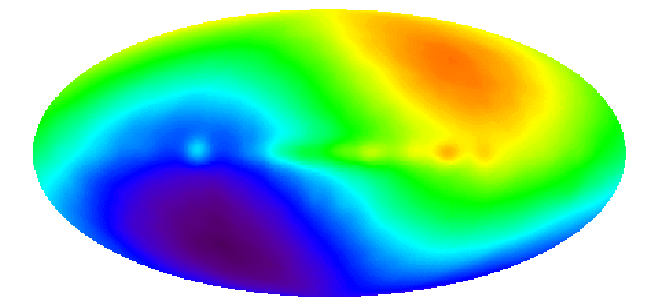Space is isotropic – the same in all directions – and homogeneous – the same at each point in a certain direction. This implies that we cannot determine our position in some absolute space, because absolute space does not exist.
We can however find our speed through space, or at least our speed relative to things in space, by measuring the doppler shift of the radiation they give off. For example, we might assume the most distant stars are fixed in space so if the stars in one direction have a larger redshift than the stars in another direction, then we must be moving in the direction of the stars with the smaller redshift. It is hard though to disentangle the redshift from the distance. Much better to use something that pervades all space and is thought to be truly isotropic- the cosmic microwave background radiation, the echo of the big bang. The cosmic microwave background radiation has the spectrum of a black body with a characteristic temperature of 2.73 K and a characteristic wavelength given by Wien's Law of
![]()
If we are not moving through space, hence not moving relative to this background radiation it will have the same wavelength over the whole sky. If we are moving through space, it will display a shorter wavelength in the direction in which we are moving and a longer wavelength in the direction from which we are moving.
We can estimate our speed through space using the formula for the redshift:![]()
where![]() is the shift in wavelength from the value of
is the shift in wavelength from the value of![]()
![]()
This is illustrated below. We are moving in the direction of the blue part, which illustrates the blueshifting of light.
